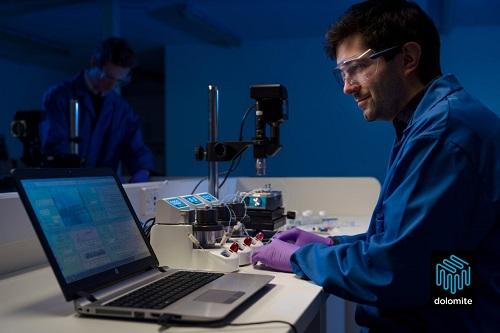Dr Dimitrios Lamprou, a Reader in Pharmaceutical Engineering at the School of Pharmacy, explained: “Our work involves the microfluidic preparation of lipid (liposome) and polymer-based (PLGA) nanoparticles that can efficiently encapsulate cancer drugs or MRI contrast agents, among other applications. Since both types of compound present some degree of toxicity, it is important that the cancer drugs are only released into the target cells, while the contrast agent remains encapsulated at all times without losing functionality.”
“Microfluidics offers controlled release and robustness, making it a lot easier to create the monodispersed particles that are crucial for these applications. As well as manufacturing nanomedicines, it can be used for drug screening and lab-on-a-chip applications, which can help to cut down on animal studies. Microfluidics is also a lot faster than the traditional methods – a formulation that used to take a couple of hours to prepare only takes a few minutes now – and uses less reagents, which benefits the environment.
"However, we still use the ‘old-fashioned’ formulation methods, comparing our microfluidic data with results obtained from batch formulation processes, and teach our students to use both techniques so that they are familiar with traditional and innovative approaches. We use a variety of microfluidic systems, including devices from Dolomite Microfluidics.
"What I like about the Dolomite system is that it is straightforward to use – you can control it via a PC and the software is user friendly – and the support team is always helpful.”
For more information, visit www.dolomite-microfluidics.com
